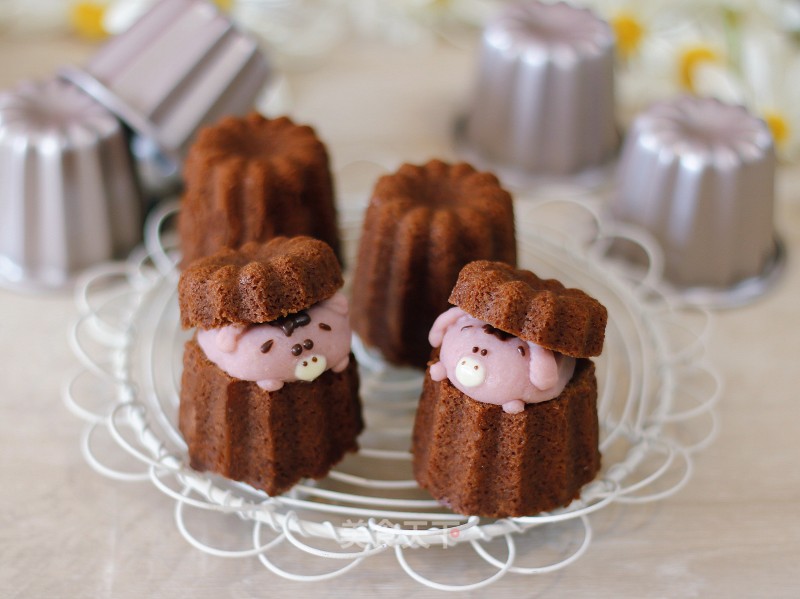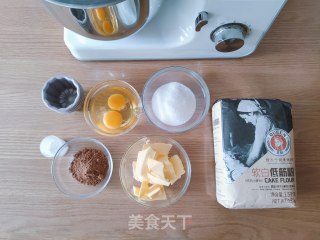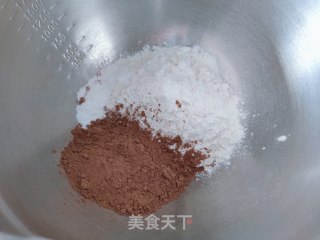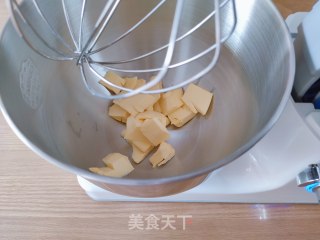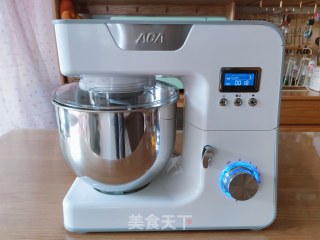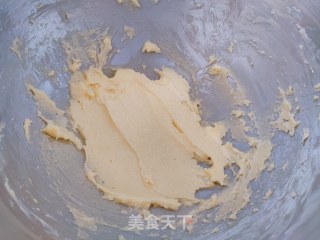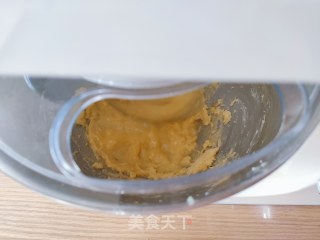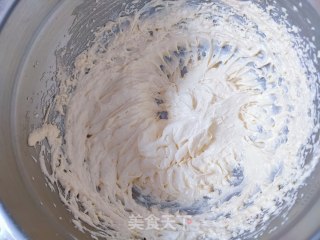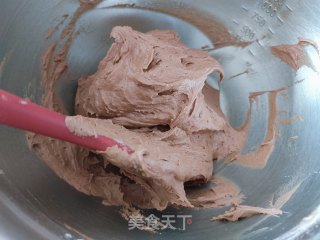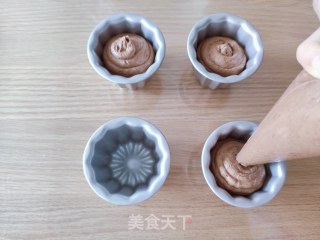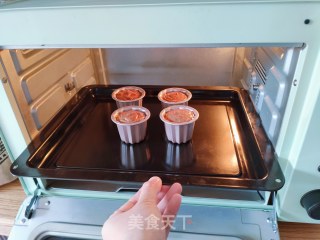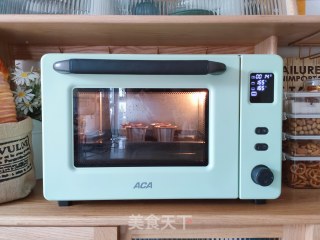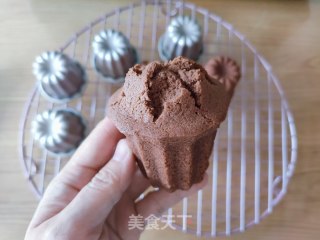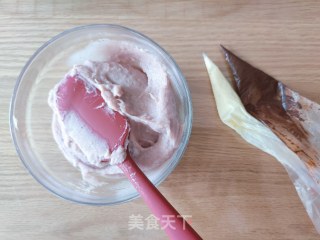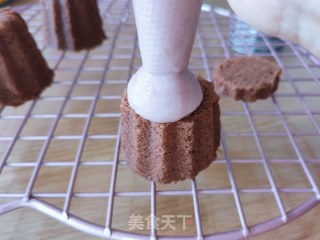Taro Mashed Piglet Chocolate Pound Cake
1.
Weigh and prepare various materials. Cut the butter into small pieces or thin slices and soften it to the softness that your fingers can easily press in at room temperature.
2.
Combine cocoa powder, low-gluten powder, and baking powder through a sieve twice and set aside for later use.
3.
Pour the softened butter into the mixing bucket of the ACA cook machine, and install the egg-beating net.
4.
Stir the butter on medium-low speed in the third gear, about 1 minute, until the butter is creamy without lumps.
5.
Then add fine sugar and stir evenly at high speed 5. At this time, the butter is whitish and fluffy. Dip a little butter cream and rub it on your fingertips to make sure that no sugar remains.
6.
Add a spoonful of egg liquid to the butter cream whipped in the previous step and continue to beat at high speed.
7.
After thoroughly mixing, add the remaining egg liquid in four or five times, stirring each time until it is completely combined. You can suspend the ACA chef machine in the middle, and use a spatula to scrape off the materials on the sides of the basin and stir them together.
8.
The stirred butter is whitish and fluffy, and there is no separation of water and oil.
9.
Add the powder sieved in the second step to the cream of the previous step at one time, and stir it with a spatula until there is no powder and the gloss appears.
10.
Put the cake batter into the cut-out piping bag, squeeze it into the mold, and it will be full. Because I only have a set of 4 molds, each batter is squeezed more, and it will expand more when baking. If there are 6 molds, it will be just right.
11.
Shake the mold a few times, put the air out, put it in the middle of the preheated oven, and bake at 165 degrees for about 18 minutes.
12.
The specific time and temperature should be adjusted according to the actual oven temperature of different ovens.
13.
Bake until the top swells up, and the middle part of the cracks feels fluffy and rebounds when pressed with your fingertips. After demoulding, set aside to cool.
14.
Next, prepare for decoration: Sift the steamed taro paste, add an appropriate amount of cold water (or light cream), and powdered sugar to mix thoroughly until the sweetness is moderate and easy to squeeze out. The black and white chocolates are put into piping bags and melted in water for later use.
15.
Cut the top of the pound cake horizontally with a knife, put the taro paste into a large-cut piping bag, and squeeze it on the side of the cut surface. Lift the piping bag while squeezing to make the shape of the squeezed taro paste as round as possible.
16.
Use the melted dark chocolate to draw the pig's bangs, eyebrows and eyes.
17.
Then draw the nose with white chocolate, and finally squeeze out the ears on both sides with a little taro mash, and cover the top of the cut pound cake. The cute little pig chocolate pound cake is ready.

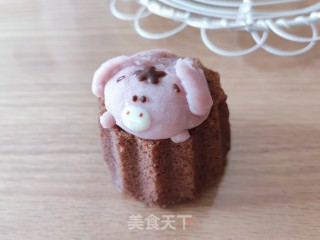
Tips:
1. Regarding softened butter: If the butter is over softened or melted into a liquid, it will be difficult to pass it successfully. Therefore, it is recommended to take out the butter that needs to be softened from the freezer one night in advance, and put it in the refrigerator or room temperature (about 20 degrees) to soften it.
2. Regarding caster sugar and powdered sugar: When making cocoa pound cake, use caster sugar instead of commonly used powdered sugar or white sugar. Because cocoa powder contains oil, if you add strong water-absorbing powdered sugar or sugar, the texture of the cake will become sticky.
3. Regarding the egg liquid: the egg liquid must be at room temperature, not refrigerated, otherwise it will cause the whipped butter to solidify and cause water and oil separation. When adding the egg liquid, be sure to add it in small portions. After each addition, stir until it is completely combined, and then add the next time. If the water and oil have been separated, stirring, stirring, adding flour or heating will not help.
4. Regarding the degree of mixing after adding the powder: Excessive mixing will produce viscosity and affect expansion, which is what we call "ribbing". Therefore, after adding the powder, stir it for four more times when the powder is uniformly blended and there is no powder residue Five times, just a little gloss.
5. Regarding the maturity of the cake baking: Some people are used to inserting a toothpick into the middle of the cake to see if the cake crumbs are stuck on the toothpick to judge whether it is cooked. The disadvantage of this method is that a small hole is left, and the part where the toothpick is inserted becomes tight. Therefore, it is best to judge by baking color and touch.
6. About demoulding: the cake should be demoulded immediately after baking, so as not to heat the soft cake body with bubbles.

